When shopping for shoes online or in-store, it seems like the sizing is all over the place. It’s disorganized and subjective like there is no rhyme or reason, and in some ways, there isn’t! Even in the same country, shoe sizing is anything but standardized, but once you take into consideration, regional differences become even more obscure. How can someone be a size 9 in the UK, a size 10 in the US, a size 27 in Japan, a size 41 in Brazil, and a size 43 in Europe? Feet certainly aren’t growing that quickly!
Here, we’ll discuss how shoes and feet are measured, how regional shoe sizes developed and why they did so, why converting shoes is so difficult, and finally, we’ll provide resources that will help you find the right shoe for your feet.
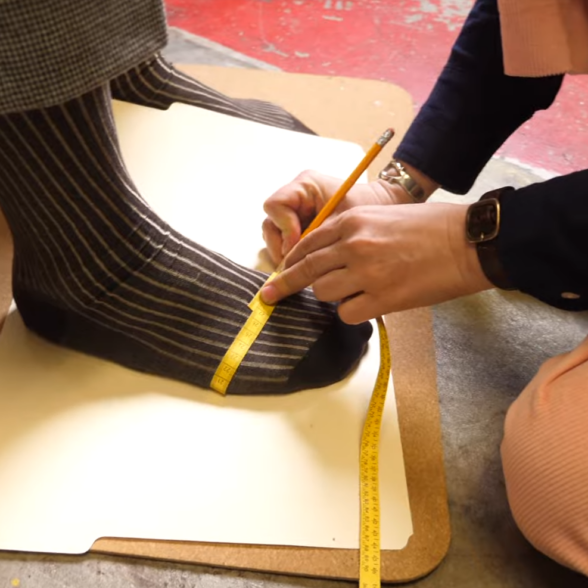
The essentials of
Shoe Fit
Want to learn how to find the right shoe size for you quickly? Here are two pieces of our most essential content on the subject.
Shoe & Foot Measurements
So, first up, how are shoe sizes calculated and conveyed? Basically, there are two possible ways of sizing a shoe. One is to size the foot; the other is the last. So, you might ask, aren’t those the same things? Actually, no. If you create your sizing based around the foot, you’ll do just that: you measure the length of the foot and the width in the ball area. The foot is measured in length from the tip of your longest toe to your heel and the width in the widest area of your ball.
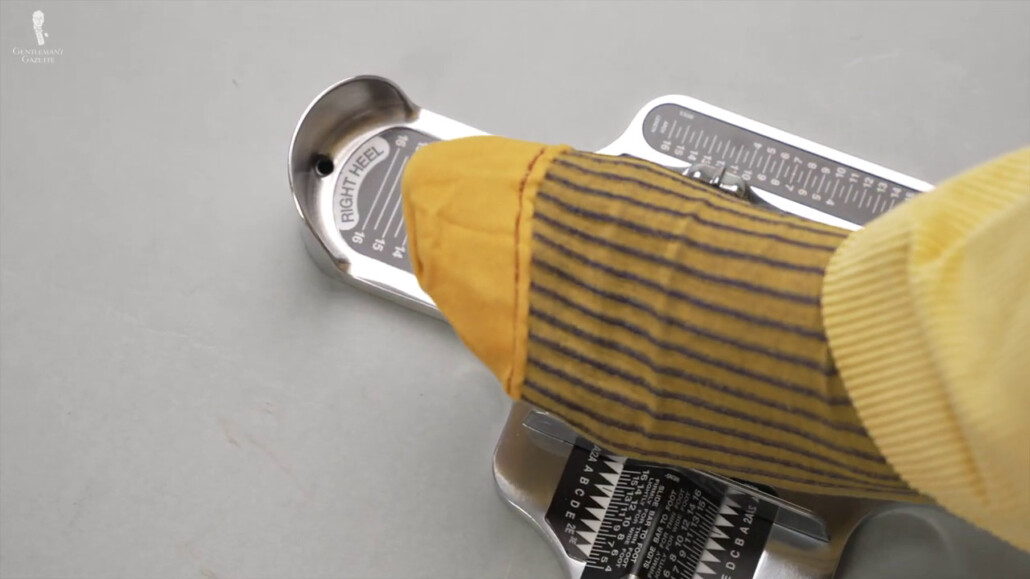
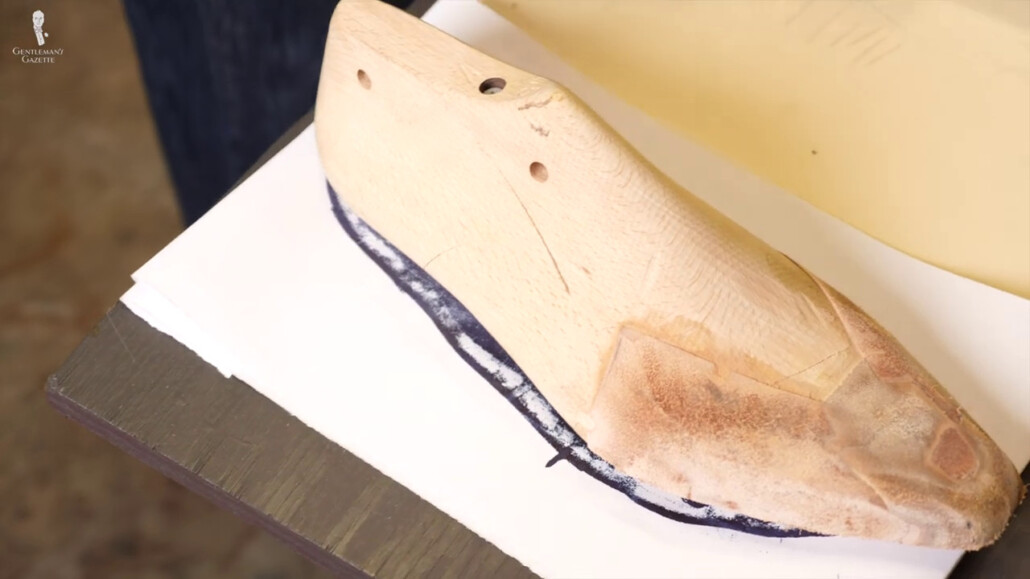
The last is the piece of wood or plastic a shoe is built around, and it’s typically larger than your foot, so your toes don’t hit the front of your shoe every time you take a step. Here, the length is measured from the heel point to the front point, which is longer than your foot, and the width in the ball or maybe around the ball area, which is probably also wider than your foot. Sometimes, people measure the actual last, or they measure the shape on the inside of the shoe. It all depends and varies, making it more varied and subjective.
To achieve the perfect fit, more proportions have to be taken into consideration. There’s the instep, your arch, and the proportion of your toe length to the rest of your foot. Also, not all heels are the same size, and if you want to learn more about all the measurements you take for a bespoke shoe, we’ve got you covered in a separate guide.
Measuring Feet for Bespoke Shoes
While a custom shoemaker takes into consideration all these different aspects of your foot, especially the fact that they’re not proportional on the left side and the right side, a mass-produced shoe does not do that. Instead, to accommodate the largest possible group of people, the last ends up with more wiggle room, so more people fit into the same shoe size. In short, you compromise ultimate comfort for the sellability of the shoe.
How much add-on space is given to any particular last really comes down to the manufacturer. Of course, each manufacturer does what they think is best and works with their existing sizing, thus creating even more sizing inconsistencies across the board.
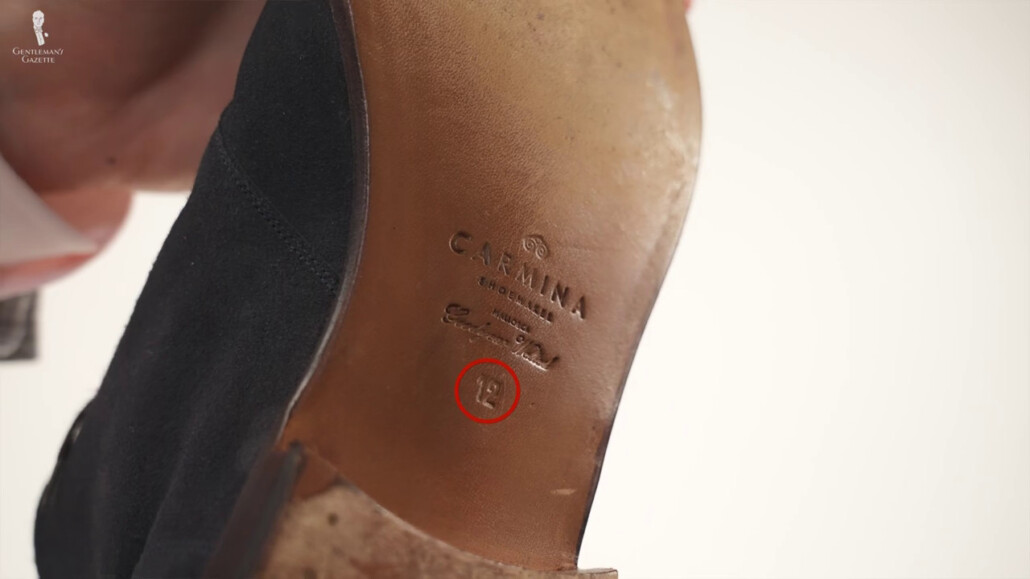
Think of it this way: shoe sizes are just a range and idea to give you an understanding of what shoes might fit you and which ones might not. These standard sizes come in either full sizes or half sizes, which allow for a more precise fit. They all have a zero point or starting point where the smallest size begins, and then it goes up from there. On the top end, there truly is no limit. I mean, just take a look at this shoe. The scale used to define a half-size and a full-size varies greatly between different regions in the world.
But why? Actually, we have to take a look at the history to understand that fully.
A Brief History of Sizing Shoes
In a nutshell, for most of human history, shoes were made in or around the household and essentially bespoke to the wearer. As trades became more specialized, the shoemaker evolved and made shoes for you. Basically, an individual sat down, took a look at your feet, and created a pair of shoes. Now, fit wasn’t always perfect, but it was focused on an individual pair of feet.
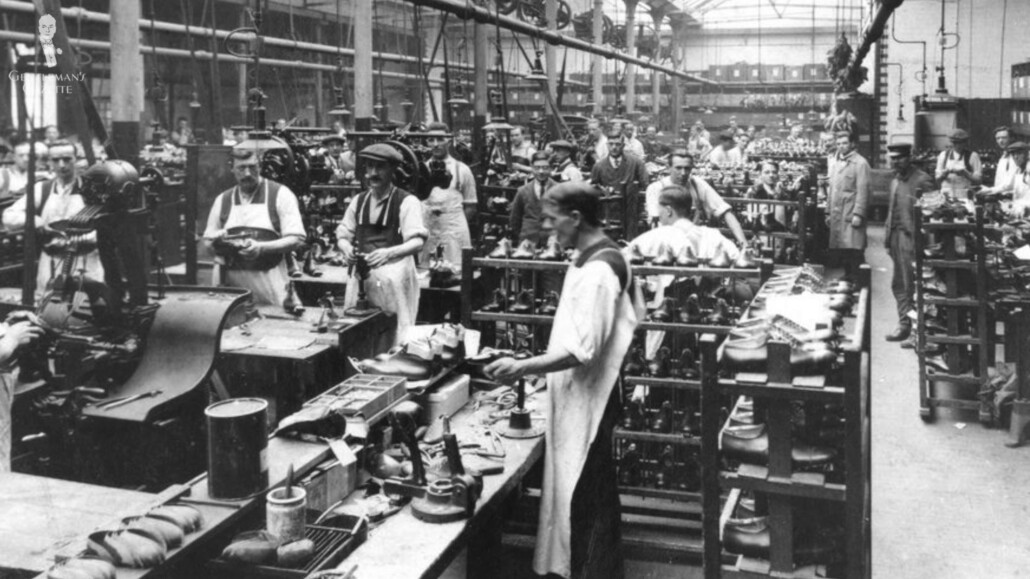
During the Industrial Revolution, clothing and shoes were mass-produced, thus bringing the cost of a pair of shoes or clothing down considerably. While the massive scale made things more efficient to produce and, therefore, much lower in cost, the comfort had to be sacrificed, and sizing became symmetrical and somewhat standardized. Why? All these pairs of shoes didn’t have to fit just one person anymore, but a range of people.
UK Sizing
In the West, one of those first systems for sizing was developed in Great Britain. So, UK sizing today is primarily used in the UK and in former colonies or areas of the Commonwealth, and that system has ancient origins that go back to antiquity. Back then, units of measurement were calculated based on human elements, such as the foot.

King Edward ii
The measurement unit “foot” was based on the length of a foot. But no two feet are the same length, so they needed some standardization with a common unit to which everyone had access. In England, in 1324, King Edward declared that one foot consisted of twelve inches. An inch was as long as three barleycorns laid next to each other the long way.
So, why on Earth would you use barleycorns as a standard for units of measurement, you might wonder? One, because they were easy to get a hold of, and two, because they were all about the same size. Well, close enough to the same size.
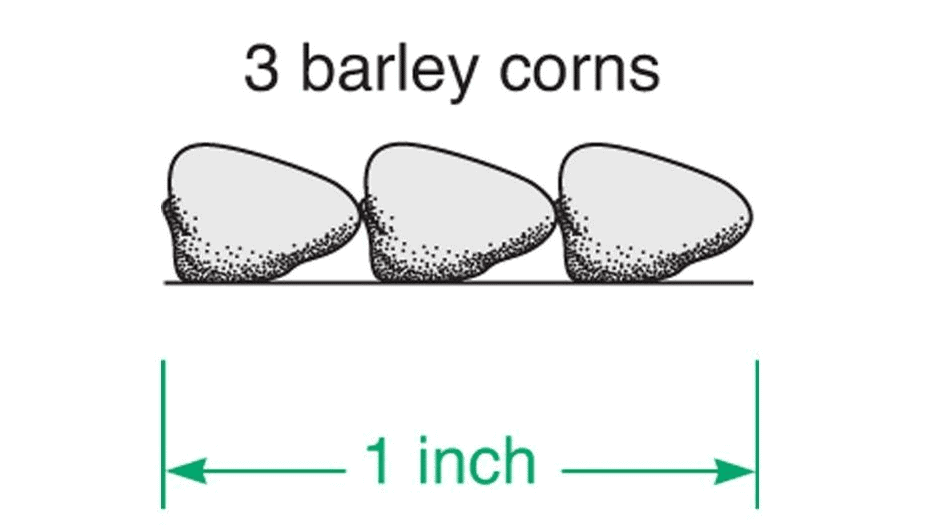
Believe it or not, the barleycorn measurement itself was used to be part of the standardized shoe size system. Starting at the zero point, adding the length of one barleycorn or ⅓ of an inch, equaled one full size. The issue was that the starting point could either be the foot or the last; and then, sometimes, UK size would start at 0 or at 1. So, ideally, a UK size 1 would fit a foot that was 8 inches long or a last that was 8 and 2/3 of an inch. So, accordingly, a UK size 2 would be one barleycorn or ⅓ of an inch longer, making it 9 in on the last.
As time went on, some shoemakers realized that ⅓ of an inch or one barleycorn was too imprecise to find the perfect fit because some people had shoes that were too small and the next size up was too big. Some shoemakers found that they had a better fit and greater precision if they used quarter-inch increments rather than third-of-an-inch increments. For example, The Academy of Armory and Blazon from 1688 states that there’s only a quarter-inch difference between full sizes. So, as you can see, over time, the standard system was not standardized at all. Furthermore, people generally have grown along with their feet. Most UK sizes now start at size 3 or 4, not at 0 or 1 anymore.
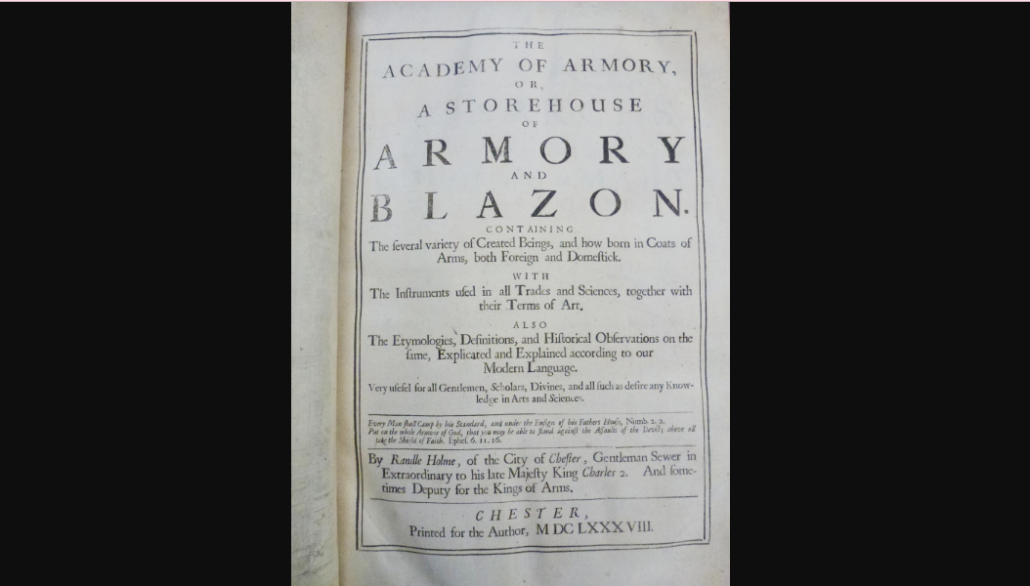
That being said, zero points can vary from manufacturer to manufacturer. On top of that, the scale per full size can vary between a quarter inch and a third of an inch, and then there are half sizes, of course. But, overall, there’s no consistency in UK sizing that guarantees you the same fit when you see the same size.
US Sizing
So, what about US shoe sizing? Well, as with many things, the US shoe sizing originated on the UK system, and of course, because things in the US are always bigger and better, there was lots of innovation around that original UK system.
So, in 1888, the standardization of US shoe sizes was put to paper by Edwin B. Simpson based on the original UK barleycorn system; each full size went up by ⅓ of an inch. However, because it started with a different zero point, each size was about one point larger than in the UK. So, the US 10 was a UK 9, the US 11 was a UK 10, and so forth. Up to this point, the width of a shoe size was not determined independently, but it just grew with larger sizes in a somewhat proportional way.

Simpson understood that people who had feet of the same length might have very different widths, and so he added a slim and a fat option, along with a regular option. The width of US size 10 slim would be of US size 9 regular, and the width of US size 10 fat would be that of US size 11 regular.
While I doubt Simpson’s terminology would be applied today, he really helped men to get a better fitting shoe at the time. Simpson also realized that a ⅓ inch was quite a bit of distance to cover, and so he introduced half sizes into his system.
Unfortunately, most manufacturers didn’t adapt them at the time. Why did the shoe manufacturers not adopt the idea of half sizes? Well, think about it with an economic lens; if you have to add half sizes to your full sizes, you basically double the cost of the stock a shoe shop has to invest—meaning, all of a sudden, I have to invest twice as much money, and I have to convince my customer that there’s a new system that works better for them in hopes to make more sales, not fewer. That’s a pretty hard sell, isn’t it?
In 1887, the American Retail Boot and Shoe Dealers National Association adopted the Simpson standard. But, in reality, the spirit of individuality came through big time in shoe sizing, and so in the US, there was just as much variation between sizes and manufacturers as there was in the UK.
The RITZ Stick
Deeply frustrated with that situation, American entrepreneur Oliver Cornelius Ritz Waller wanted to improve things. His family owned a shoe store, and in 1916, he patented the RITZ Stick. It offered a standardized way to measure your feet both in length and width. The RITZ Stick enjoyed great popularity and many stores adopted it, but there were also a lot of them who just didn’t. Some even added other proprietary sticks, which added to the confusion.
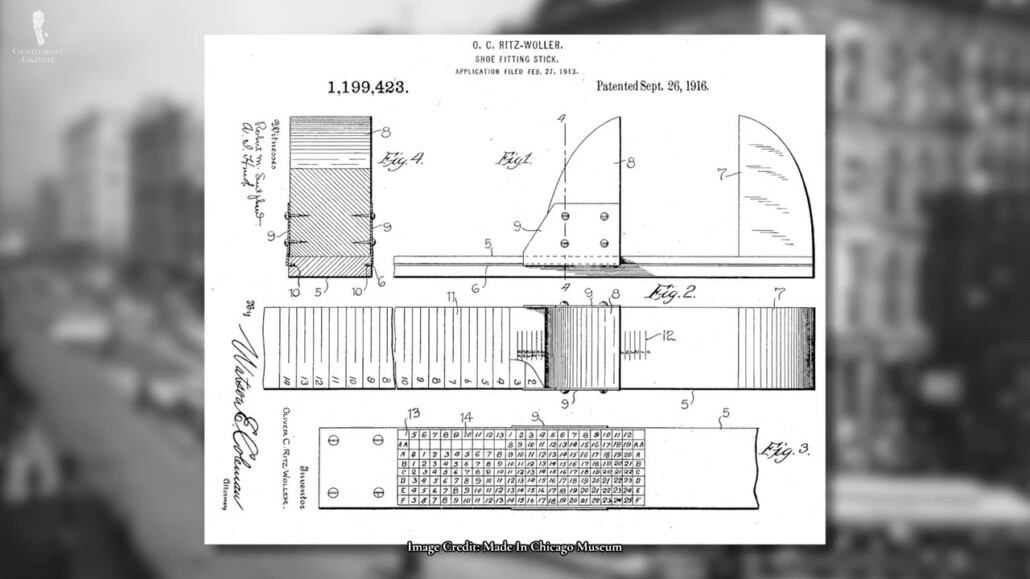
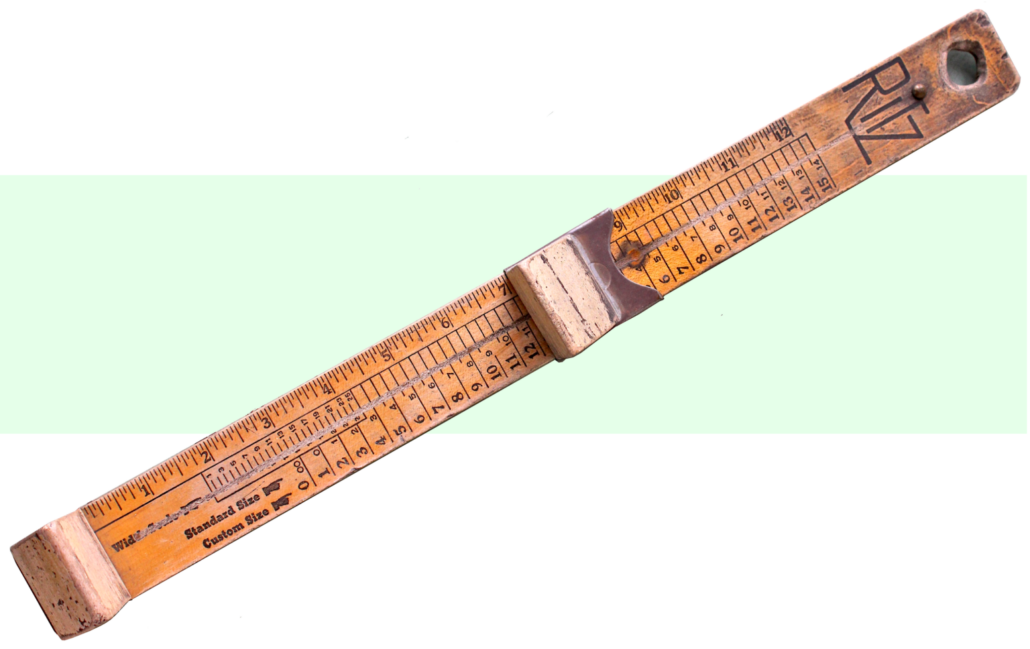
In 1925, Charles F. Brannock, whose family was also involved in the shoe business, came up with his version of a standardized sizing stick. He aptly named it the Brannock Device. The Brannock device has a zero point with US men size 1. That’s for a foot length of 7 and 2/3 of an inch, which makes for a last length of 8 and ⅓ of an inch. Each full-size increases by one barleycorn or ⅓ of an inch.
The Brannock Device
The Brannock Device standardized width has 3A as the narrowest width, D as the standard width, and 3E as the widest width. Much more polite terminology than “fat,” don’t you think? The width increases about 3/16 of an inch per size.
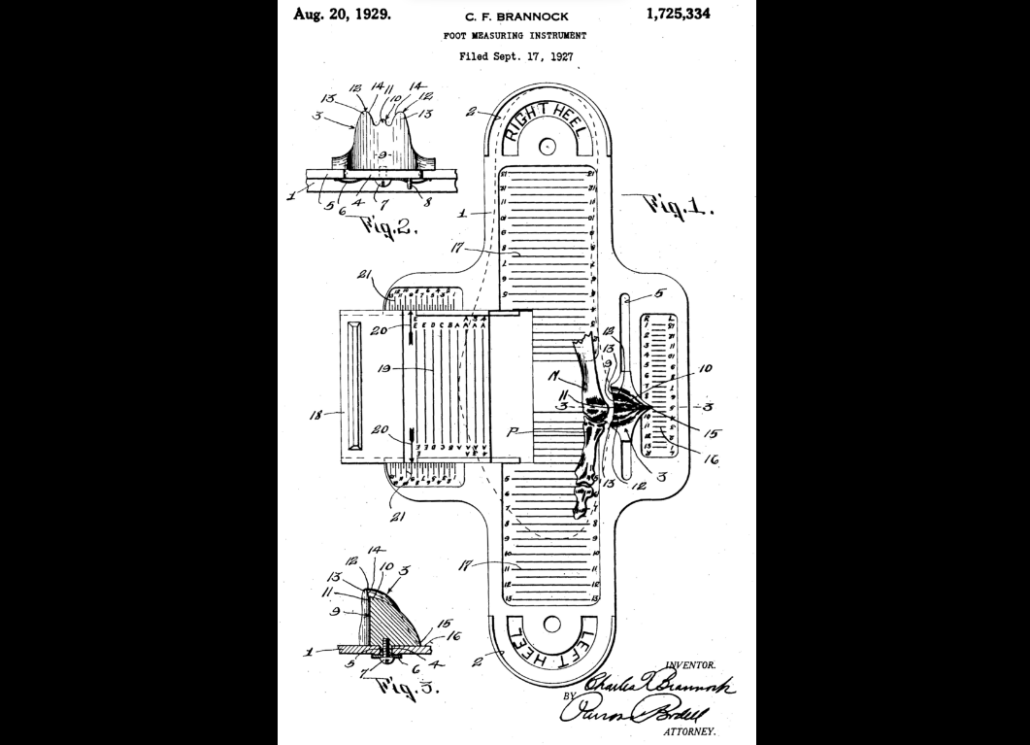
Unlike the RITZ Stick, the Brannock Device also accounted for the arch length, which is measured from the heel to the ball. Taking the special scale of the arch length into consideration in shoe size, maybe choose larger or smaller depending on your arch length.
While today the RITZ Stick is still in use, the Brannock Device is much more popular and widely adopted. You’ll see that many shoe stores and some brands even advertise that their sizing conforms with the Brannock Device. That being said, not everyone has adopted it, and there can still be variations in shoe sizes, even from the same manufacturer claiming to have adopted the product device size guide.
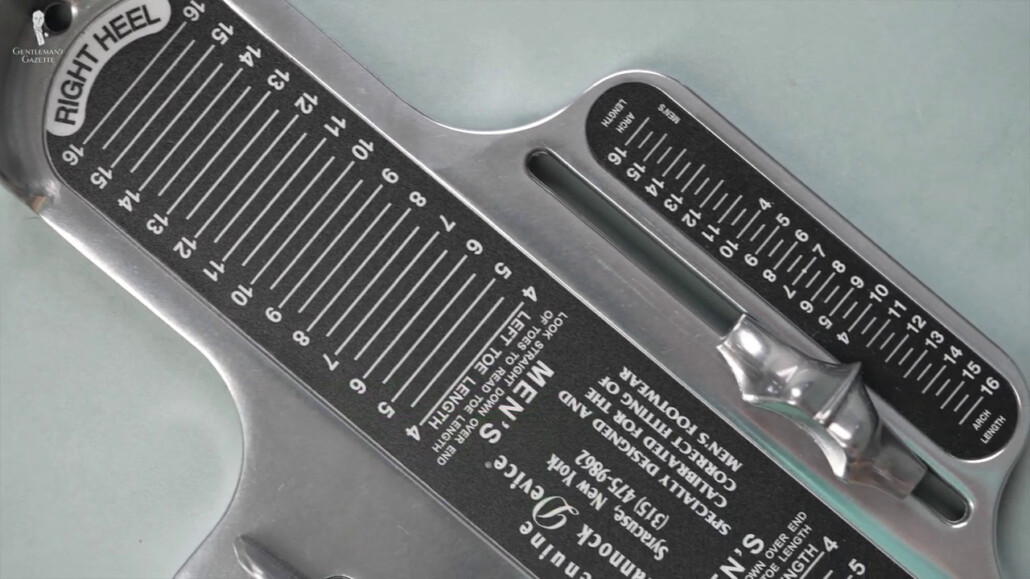
European Sizing
What about European sizing, which is sometimes also called “Continental sizing?” While the metric system was developed centuries earlier, it wasn’t widely adopted until the 18th century.
In France, the metric system was employed for a standardized shoe sizing system. It co-opted the incremental size-increasing system from the US and the UK, but instead of a barleycorn, they used something called a “Paris Point.” One Paris Point equals 2/3 of a cm or 6.67 mm; that meant, with every full size up, the shoe would get 2/3 of a cm or 6.67 mm longer.
Comparing that to the UK and US systems, where you have a ⅓ inch, which equals 8.47 mm; that means that the jump from size 11 to size 12 in the UK or in the the US is bigger than the jump from size 44 to size 45.
In Europe, European sizing is used in most of Europe, but also other countries in the Middle East and South America. Zero points for adults men’s sizes is typically a 38, but it varies. It’s approximately equivalent to a UK 4 and a US size 5, so depending on the manufacturer, about 2 to 2.5 points in length are added to the last to account for the last overhang and the comfort when walking.
In Brazil, the measurement is similar to the European one but effectively only measures the foot alone. Therefore, Brazilian sizing is typically two sizes smaller than European sizing. So, Brazilian size 43 equals European size 45.
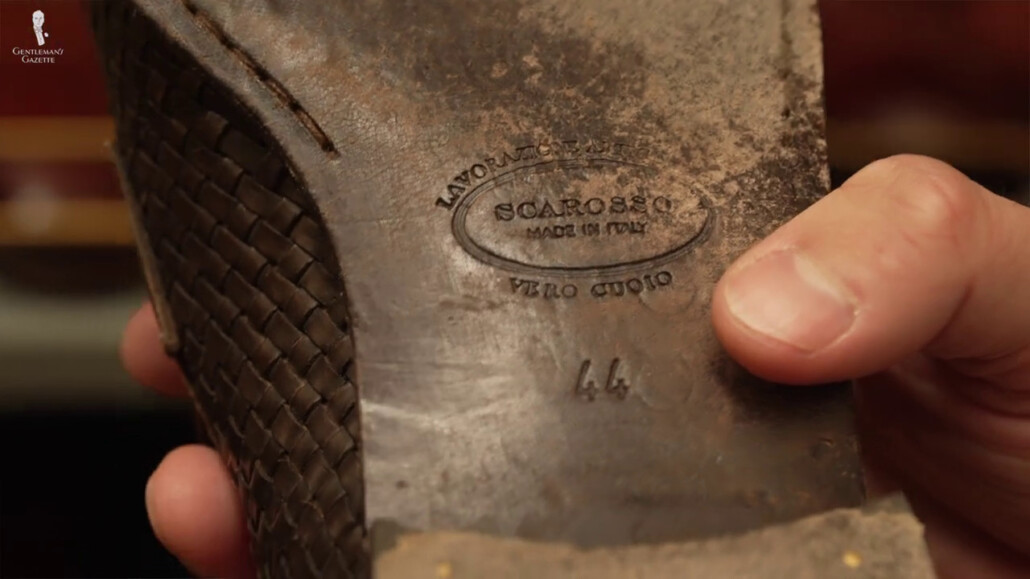
In theory, the smaller sizes, especially when it comes to half sizes in Europe compared to you UK or the US, would allow for a more precise fit. But, in practice, different manufacturers use slightly different standards, and you don’t get a uniform fit when buying shoes there either.
Mondopoint System
As you can see, this is quite frustrating, especially from a consumer point of view, and other people recognize that as well, so they came up with the Mondopoint System in an effort to unite the world when it came to shoe sizing. It was proposed by the International Organization of Standardization in the 1970s.
“Mondo” comes from the Latin word “mundus or “world,” which was a true attempt to create a worldwide system. Originally, the system used millimeters, measuring the foot from the back of the heel to the tip of the toe. It has a width vertical line between the first and the fifth metatarsophalangeal joints.
It was rounded up to the nearest 5 mm value and communicated in length followed by width. For instance, a foot measuring 278 mm in length and 109 mm in width would be a size 280 by 110.
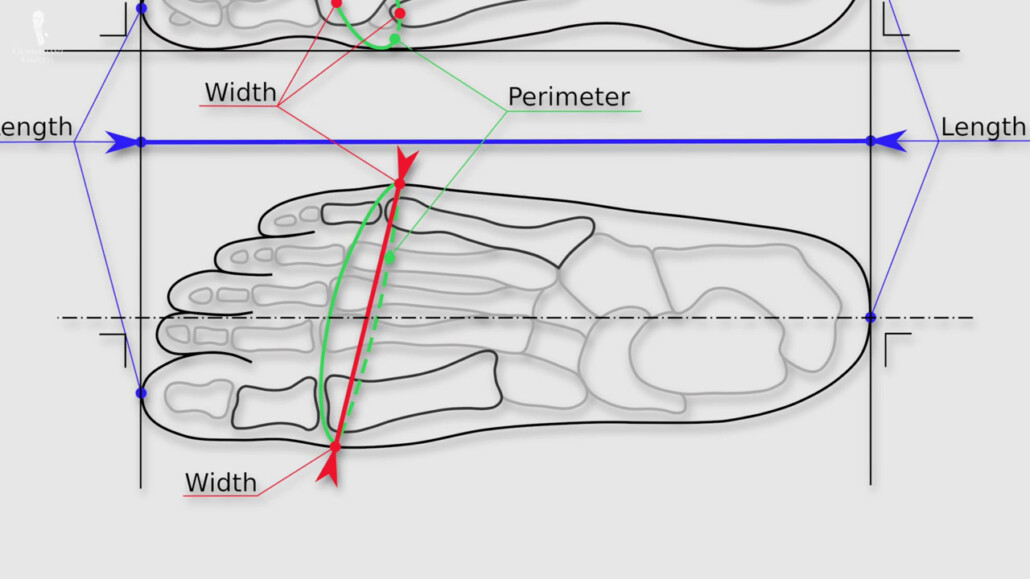
As you can see, those numbers are a lot bigger than the ones in the UK and the US system or the European system. So, eventually, many people started using cm instead of mm. In that case, the size would then be 28/11. Unfortunately, Mondopoint only added to the confusion as it wasn’t able to get everyone on board.
That being said, it is widely adopted for sports and athletic shoes. You can also find it in parts of Russia, China, Japan, Taiwan, and South Korea. Again, many of those nations use the centimeter system instead of the millimeter system that was originally designed with.
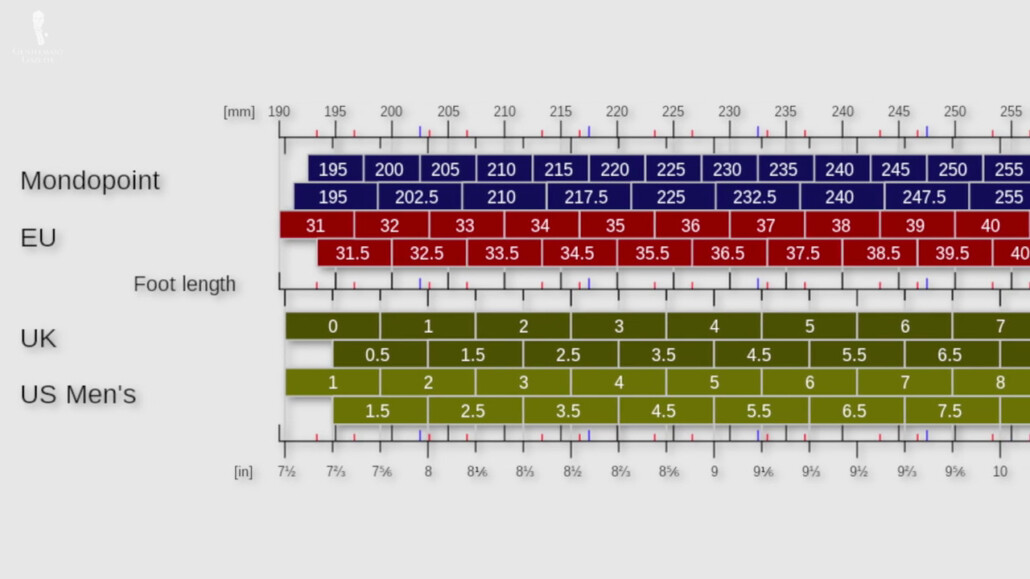
That being said, the actual sizes will always vary, typically also between makers. So, as a consumer, you have to understand what is my last and what is my size in that last, and then once you know that, you may understand if I have this size with this last and width in this manufacturer, then I would go for this size in that manufacturer.
In my experience, you have to try things out or find others who will tell you for each manufacturer and model what size they have and what size they have in a different shoe.
That being said, they may have the same foot length, but their arch length may be different than yours. They may also have different widths. So, at the end of the day, you will have to try it on for the perfect result. Over time though, as you build your shoe collection, you’ll have a very good understanding of what size it is that works for you. For me, typically, I’m between size 44 ½ to 45 European or 10 ½ to 11 UK. Same in the US. I can be 11 to 11 1/2.
Conclusion
Sometimes, these sizes are off, and I have to go outside of that range. Ultimately, shoe manufacturers are fully aware of these issues, and often, in their sizing charts, on their website, you will find instructions where they’re like, “Well, get your typical shoe size or use the Brannock Device,” or they might say, “Well, for this boot, typically, they run large. So, choose a half size smaller than what you would typically order from us.”
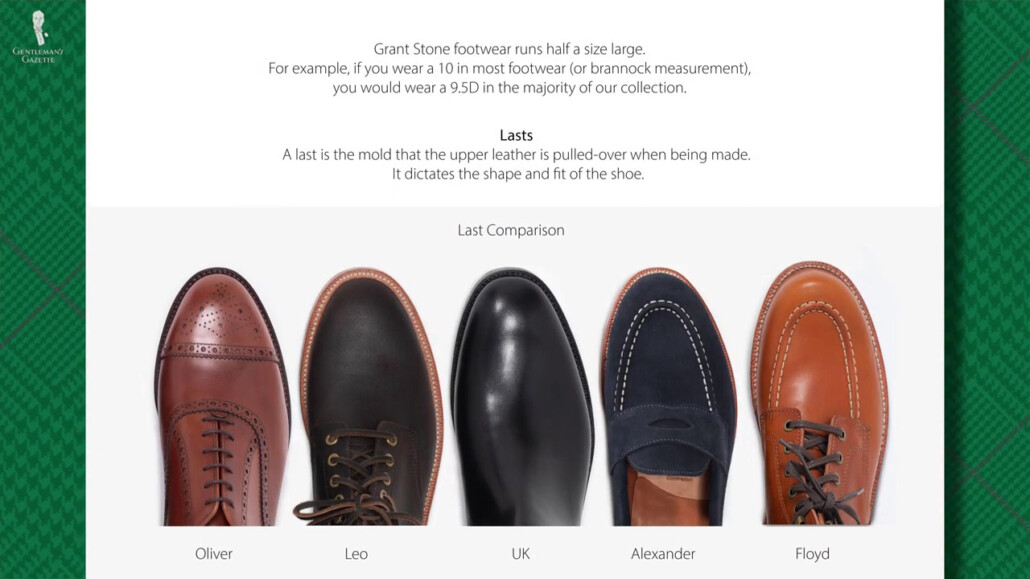
Sadly, some makers even employ vanity sizing when it comes to feet. Here in America, for instance, some men think it is very favorable to have big feet. As you know, what they say about men with big feet. They need big socks. So, if you’re sick and tired of the uncomfortable one-size-fits-all socks, take a look at our shop, where we have Fort Belvedere socks in six different sizes, so you’ll find something that is comfortable all day and won’t slide down. Of course, I’m biased because I designed those socks, but I wear them every day.
If you’re curious, a Brannock Device costs about 65 bucks on Amazon. You can also find it in many shoe stores or you can print up a paper version. Of course, then it’s important that your printer is properly calibrated; otherwise, the print may be off, and the whole sizing will be off, too. Therefore, I don’t suggest that option.
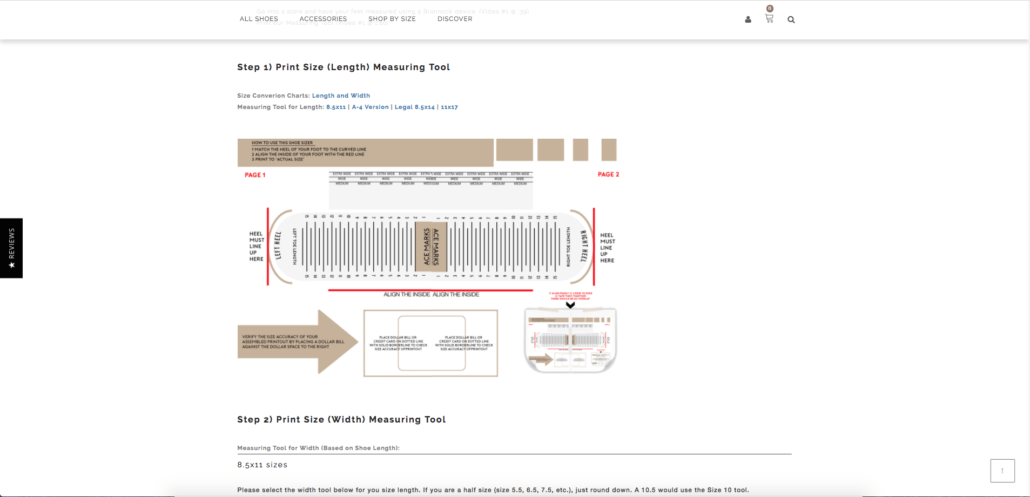
Ultimately, when it comes to shoe sizing, the fit and your comfort are more important than a certain number. So, if you’re curious about how a dress shoe should fit, we have another guide for you.
How A Dress Shoe Should Fit
Branded Sizing Guides
Below you will find links to the individual sizing guides of over 40 popular shoe brands. These size guides are developed by each brand and are one of the most accurate ways to determine correct sizing.
Outfit Rundown
Today, I’m wearing a brown and oatmeal tweed jacket paired with a Polo Ralph Lauren sweater vest in a gray pattern, a cashmere tie in brown, gray, and yellow, and the shirt from Eton in white with blue and brown elements.
My pants are true high-waisted corduroys from Fort Belvedere. They’re part of our range, they’re fully cut, and they drape really nicely. They’re extremely hardwearing and will be a great companion for years to come. You can find a full-color range in our shop.
My socks are gray from Fort Belvedere, and my shoes are from from LDM in a size 10.5 UK. They’re brown Scotch grain with some suede, Oxford boots with a wing tip design. Last but not least, I’m wearing a gold ring with a yellow citrine stone that picks up the color of my yellow corduroy pants and a green precision wristwatch that’s quite thin with a brown lizard strap that picks up the color in my tie.
The scent for today is the Roberto Ugolini Oxford, which goes well with my shoes, the brown tones in my outfit, and the classic scent profile.
Shoe Sizing FAQs
What are the main types of regional shoe sizes?
UK Sizing, US Sizing, European Sizing, and Mondopoint System. The European and Mondopoint Systems also have several national varieties.
What is UK sizing?
UK sizing varies based on children’s shoe sizes, women’s shoes, and men’s shoes. Men’s shoes run from size 0 or 1 up to size 15, although most makers only offer sizes 4,5, or 6 up to 12 or 13. Between each full size, there is approximately one barleycorn of difference.
What is a barleycorn?
A barleycorn is a medieval standard of measurement that is still used in certain shoe sizing conventions. It is usually equal to about ⅓ of an inch, although ¼ of an inch is sometimes used.
What is US sizing?
US sizing is very similar to UK sizing, and varies based on men’s sizes, women’s sizes, and children’s sizes. However, because of how shoe size is calculated, most US sizes are either a half size or a full size larger than an equivalently-sized UK shoe.
What is European Sizing?
European sizing features a graduated shoe size convention, similar to the barleycorn in the UK and US sizing, but it is based around the Paris Point, which is equal to 2 ⁄ 3 centimeter or 6.67 millimeters. European shoe sizes generally run from around a size 38 up to a size 50. There can be a considerable size difference between a UK/US and Euro shoe size, so use a size guide provided by the maker to help you find the right size.
Where is EU Sizing employed?
Although there are regional variations, EU sizes are employed in Albania, Andorra, Austria, Bahrain, Belgium, Bulgaria, Croatia, Czech Republic, Denmark, Egypt, Estonia, Finland, Germany, Greece, Hong Kong, Hungary, India, Israel, Italy, Kuwait, Latvia, Lithuania, Luxembourg, Macau, Malaysia, Monaco, Montenegro, North Macedonia, Norway, Oman, Poland, Portugal, Qatar, Romania, Saudi Arabia, Serbia, Singapore, Slovakia, Slovenia, South Africa, Spain, Sweden, Switzerland, Taiwan, The Netherlands, Turkey, Ukraine, United Arab Emirates
What is the Mondopoint System?
In this measuring system, shoe size reflects the length of your foot and the width of your foot in millimeters: for instance, 280/110 shows a foot length measurement of 280 millimeters and a width of 110 millimeters. Although commonly employed in parts of Asia, Russia, and an in the sporting shoe industry, relatively few dress shoes are sold according to the Mondopoint System.
How do I convert between regional shoe sizes?
Using the chart in this guide, you can find an approximation of your size in different regional shoe sizing conventions. However, these suggestions will only help you narrow down your options. To find the best fit, you will need to actually try on shoes to find the perfect fit for your individual feet.


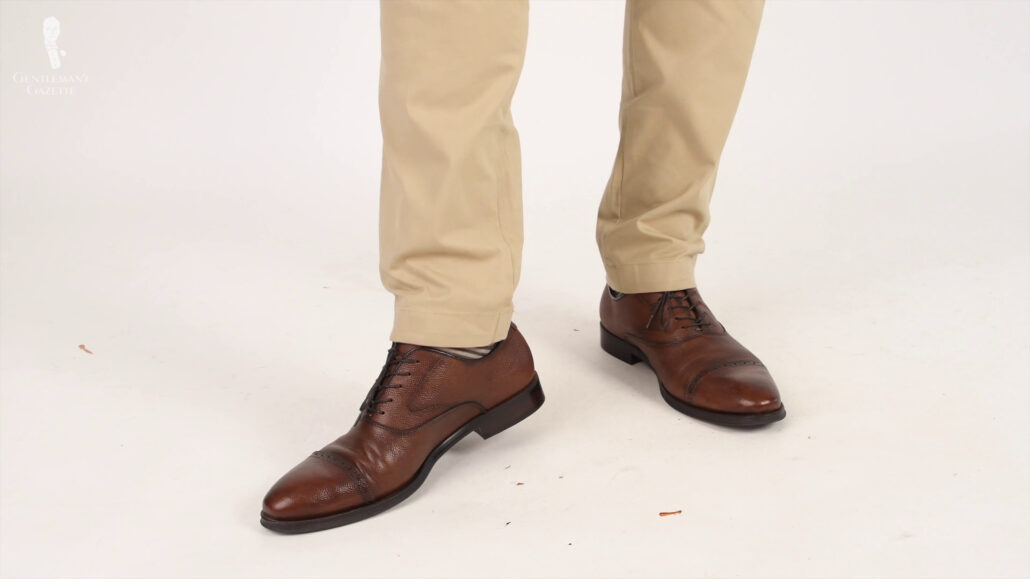
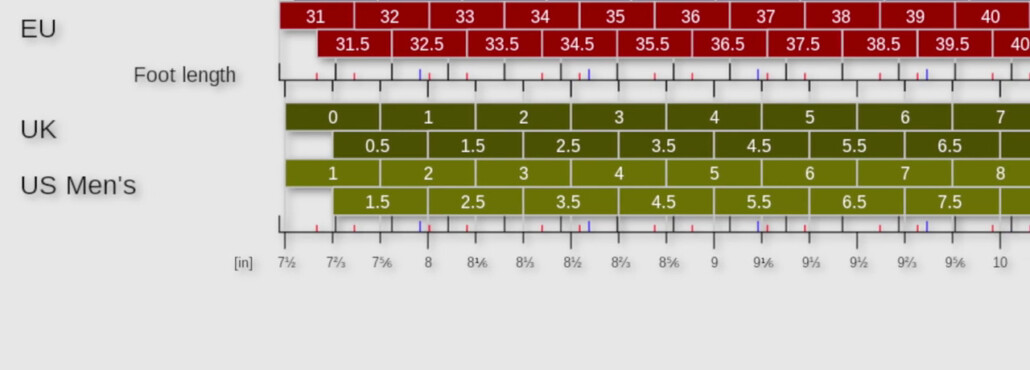

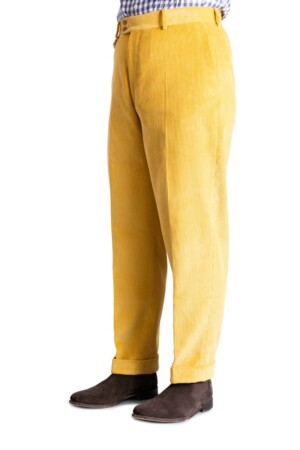
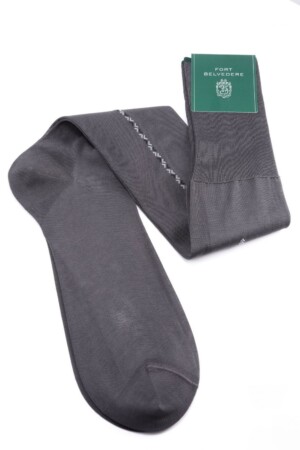

Thank you Raphael for a new video! My education about classic fashion is again improved. By the way, it is shame, that there is no real working metric system, that every shoe maker would use, so we could buy shoes even online with ease, but it is not the case. It is absolutely important to try shoes in person, because online it is 50:50 bet. 2 years ago, I odered Vass shoes from Budapest through internet even with measuring my foot and the shoes did´t fit nevertheless. The next time, I will travel to a specific country to buy new shoes.
Have a nice day and keep coming with new videos. By the way, if you invite enthusiastic gentlemen in your house again this year, I might join you.
Best regards
Oscar
Great article, but failed to point out unless I miss it the wearing of socks when trying to size a shoe. if you wear a certain thickness sock all the time great. However if you have different types of socks that have different thickness. You will have to consider this in sizing your new shoes or boots, are if you wear thicker socks for winter and thinner ones for summer the same shoe are boot will fit differently. Also, I was going to by a pair of boots in my 9 1/2 size but when I tried them on they were going to be to small for the winter socks that I wear, so I purchased a size 10 and that was perfect when I wore them with my “LL Bean” thick wool socks.
Great article again, thank you!!
I mostly wear Santoni shoes. Sadly they are notoriously inconsistent when it comes to size. I have 8, 8.5 and 9’s
Different lines are different (sneaker, vs goodyear vs blake) and even models in the line. This makes it impossible to buy online.
Is this just Santoni? Why is there no consistency?
Great article gentlemen.
I discovered years ago that trying on a pair of shoes before purchase was necessary to getting a good fit for my foot and so that has been a consistent practice of mine when purchasing a new pair of shoes. However, with the advent of online shopping, that option is no longer available. When I do purchase shoes online I make sure that the seller has actual measurements in mm, cm, or inches available, and the more measurments the better. Since I know my foot measurements in all 3 increments this allows me a closer to true fit. I also make sure the seller has a good return policy, just in case. Once the shoes arrive and I have had the chance to try them on, and evaluate the fit, I can decide whether or not they should be returned. I have not yet had to return any online purchased shoes, although I have had a couple of pairs that were just slightly to large. A problem I solved by the simple addition of leather insertable shoe liners. I also had a pair that were slightly to small, but that was solved by giving the shoes a little stretch.